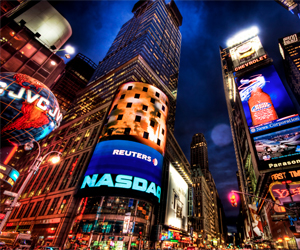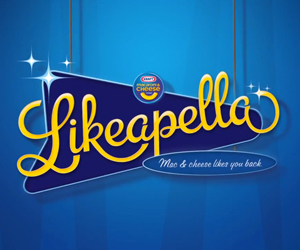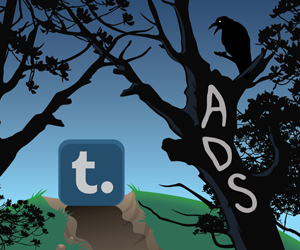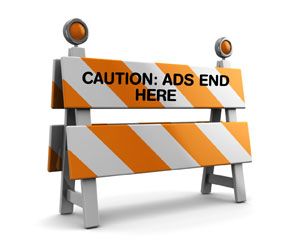

How Story Platforms Help Global Brands Go Local
While the current turmoil in Cairo may obscure the post-revolutionary optimism that pervaded the city last winter, that mood was powerful at the time. Despite the chaos in the virtual absence of government, the metropolitan region of some 14 million was taken over in January by an Arabic pop music video urging people to "go crazy" by committing acts of kindness to spread happiness. The film, produced by Coca Cola, features street scenes of people being kind and happy in well-known Cairo locations. Locals say it perfectly reflected the hopefulness and optimism of Egypt's people as they embarked on the difficult path of building a new democracy.

Possibly the Greatest Brand Story Ever Told
The most effective mass media is the stories we tell and conversations we have with each other. If you don’t believe me, let me prove it to you.
We've all seen an endless number of ads for cars, car dealerships, and the like. If I think really hard, I may be able to remember a few of them. Let’s see… I remember the Volkswagen ad with Kid Vader (but mostly because it was so talked-about, not because I thought it was so effective). I remember the Toyota Celica ads in which the senior citizen sees a parked Celica and yells, “Slow down. This is a neighborhood!” If you gave me 10 more minutes, I could probably think of another three to five, but not much more. Considering how many car ads I’ve seen in my lifetime, that’s a pretty low recall rate, and I can assure you that none of them influenced my purchase decisions.

The Best Advertising Isn’t Advertising Anymore
For decades, advertising was a joyous place. Executives enjoyed two-martini lunches as they watched the ad dollars roll in. Ads were spread through every new medium—from print to radio to television. Ad agencies were held to vague benchmarks, and they promised massive exposure (as measured by metrics like number of print subscribers, average daily travelers passing by a billboard or number of television purchases) to the highest bidder. Brands blindly believed that these metrics (potential eyeballs) meant guaranteed success.
Advertising still is a joyous place, but for different reasons. Two-martini lunches are a thing of the past (or at least I’m not invited to them). But martinis aside, advertising in the post-advertising age is filled with amazing creativity and opportunities to constantly challenge the status quo, innovate and reach audiences with unique and authentic content.

YouTube’s Original Channels: One Giant Leap for Brandkind
Back in South East England, rolling through the mists of time (well, the late ’70s...), to when my main mode of transport was a space hopper and Pong was the ultimate in console gaming, I was taken to the cinema by my parents every week. Back then, local adverts were played between the B and A movies as part of the show: ‘Wedding dresses...’, ‘The sharpest suits...’, ‘The best chicken tikka in town... only 50 yards from this theatre’, they would announce with pride. Here’s a relatively high-production value advert for Cobb Gate Fish Bar, in case you are unfamiliar with the format.

Will Facebook Exist in 2020?
I have a bet with a friend who works in finance. He believes that Facebook will not exist in seven years. I, a marketer, couldn’t disagree more. It reminded me of when, in 1995, astronomer Clifford Stoll claimed that the Internet was “grossly overpromoted" and would ultimately be looked on as a fad. (He has since acknowledged his mistake.) More from Clifford later.
It’s difficult to define what “existence” even means in today’s digital age, when social technologies are imagined, developed, funded, adopted and acquired by a media conglomerate (often Facebook) in a matter of months, not years. Myspace is technically still in existence (I had to test it in my browser as I wrote this, just to be sure), but it’s far from relevant anymore in the social sphere. If Facebook goes the same route, I’ll concede defeat.
But I don’t expect to be in that situation come 2020. Though Wall Street is panicking about the stock price, which has shrunk by nearly half, Facebook is a game-changing technology, and technologies like that don’t just fade away in less than a decade. As we do the automobile, we can’t image what we ever did or would do without it. It’s a technology that we seemingly never saw coming (as opposed to a smartphone or tablet, which were arguably natural evolutions in product innovation), and technologies like that are special.
So if I’m so confident about the future of Facebook, where do I think it’s going? What do I think it will look like in seven to 10 years? As technology is moving so quickly, it would be futile for me to speculate on exactly what Facebook may be at that time, but here are four that opportunities could help sustain the platform.

4 Great Ways to Leverage User-Generated Content
Great user-generated content (UGC) should not exist in a vacuum—it should be reused, when and where appropriate, to bring color and authenticity to a brand’s marketing.
As brands expand their social-media footprints, many have also (smartly) placed more emphasis on engaging with their fans. As a result, they’ve begun proudly featuring selected consumer contributions in print, TV and online advertising. Dedicated fans often create a gold mine of content that’s just waiting to be explored, and in due course, brands have begun to dip into this resource. It’s the easiest and most direct way to build relationships with customers, because their passion for their favorite brands makes them happy to respond and share their stories—messages that are infinitely more compelling than what the brand might say.
Here are some great ways to use freely made consumer-generated content from social channels to great effect.

Is Tumblr Doomed?
Tumblr is doing things differently. While Facebook and Twitter constantly load up on new features—many of which premiere to groans from avid users—Tumblr is scaling down and making things simpler in order to foster a positive artistic community. Tumblr also stands out by refusing to employ traditional digital-advertising methods. With more than 64 million blogs and 15 billion monthly page views, Tumblr could easily make millions through display, banner or video ads. But founder David Karp is sticking to his guns and rejecting anything he deems counter-creative. Instead he is focusing on a more holistic, integrated form of advertising wherein the brands involved must create great content on Tumblr. But given that the platform hosts edgy content (most recently, the disturbing “Holmies" sect) and is still largely pigeonholed as a place for fanatics and fanatical sharers, is this just wishful thinking?



